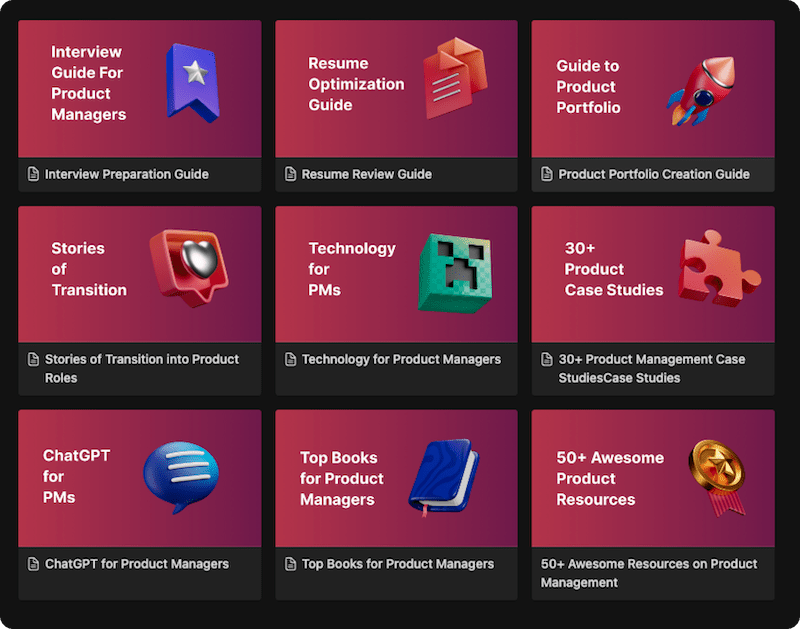You have a brilliant idea for a new product. You can see it clearly in your mind, and you’re convinced it will be a game-changer. But how do you translate that vision into a concrete business case? How do you prove to your stakeholders, engineers, and executive team that this isn’t just a solution looking for a problem, but a genuine market opportunity worth investing significant time and resources into?
This is where you move from a passionate creator to a strategic product leader. The bridge between a great idea and a great product is built on a solid foundation of market understanding. The document that captures this foundation, that defines the “what” and the “why” before a single line of code is written, is the Market Requirements Document (MRD).
This guide will take you on a deep dive into the MRD. We’ll go beyond a simple definition to explore its strategic purpose, its key components, and its critical relationship with its more famous cousin, the Product Requirements Document (PRD). You will learn not just what an MRD is, but how to research and write one that gets your team aligned and your product green-lit for success.
The Purpose of the MRD: Bridging the Gap from Market to Product
Think of building a product like building a house. The MRD is not the detailed construction blueprint. Instead, it’s the initial strategic plan the real estate developer creates. It proves there’s a demand for houses in a specific neighborhood, identifies the target buyer (e.g., young families), and outlines what those buyers are looking for (e.g., a three-bedroom home with a backyard).
The purpose of the MRD is to:
- Define the Target Market: Clearly identify the potential customers and their characteristics.
- Articulate the Market Problem: Explain the pain points and unmet needs of the target market.
- Establish a Business Case: Demonstrate the size of the opportunity and justify the investment of company resources.
- Align Stakeholders: Create a single source of truth for marketing, sales, engineering, and leadership, ensuring everyone understands the “why” behind the project.
- Provide Input for the Product Team: Serve as the foundational input for the product team to begin defining a specific solution, which will be detailed in the Product Requirements Document (PRD).
Key Components of a Winning MRD (A Section-by-Section Template)
A comprehensive MRD is well-structured and data-driven. While the exact format can vary, a winning document typically includes the following sections:
- Executive Summary: A concise, one-page overview of the entire document. It should summarize the market opportunity, the target customer, and the business case so a busy executive can grasp the core idea in minutes.
- Target Market & Personas: This section details who the product is for.
- Personas: Create 1-3 detailed user personas representing your ideal customers. Include their demographics, goals, motivations, and pain points.
- Market Segmentation: Describe the broader market and how you’ve segmented it to identify your target niche.
- The Market Problem / Opportunity: This is the heart of the MRD. Clearly and compellingly describe the problem your target customers are facing. What are their unmet needs? What challenges are they struggling with? Use quotes from customer interviews and data to make the problem tangible.
- Competitive Landscape: No product exists in a vacuum.
- Direct Competitors: Companies offering a similar solution to the same problem.
- Indirect Competitors: Companies offering a different solution to the same problem.
- Analysis: Analyze their strengths, weaknesses, pricing, and market positioning. Identify gaps in the market that your product can fill.
- Market Requirements: This section translates the market problems into high-level requirements for a solution. These are not detailed features. Instead, they describe what the product must do from the customer’s perspective.
- Example: Instead of “Add a 256-bit AES encryption button,” the market requirement would be: “The solution must provide users with a secure way to protect their data, ensuring peace of mind and compliance with industry standards.”
- Sizing and Business Opportunity: This is where you make the financial case.
- Market Sizing (TAM, SAM, SOM): Estimate the Total Addressable Market, Serviceable Available Market, and Serviceable Obtainable Market to quantify the opportunity.
- Potential Revenue: Provide a high-level forecast of potential revenue, pricing strategy, and alignment with overall business goals.
MRD vs. PRD: The Ultimate Showdown
Confusing the Market Requirements Document (MRD) with the Product Requirements Document (PRD) is one of the most common mistakes in product management. While they are deeply connected, they serve very different purposes.
- The MRD focuses on the Market Opportunity (The “Why” and “What”).
- The PRD focuses on the Product Solution (The “How”).
The MRD is the input for the PRD. You cannot effectively write a PRD without a clear MRD.
Here’s a detailed breakdown of the differences:
| Aspect | Market Requirements Document (MRD) | Product Requirements Document (PRD) |
| Purpose | To define the market opportunity and justify the business case. | To describe the product that will be built to address that opportunity. |
| Focus | The Market and the Customer Problem. | The Product and its Features/Functionality. |
| Core Question | Why should we build something, and what problem does it solve? | How will the product work to solve that problem? |
| Owner | Typically Product Marketing Manager or senior Product Manager. | Typically Product Manager or Technical Product Manager. |
| Audience | Business executives, sales, marketing, and product leadership. | Engineering team, UX/UI designers, and quality assurance (QA). |
| Content | Personas, competitive analysis, market sizing, high-level needs. | User stories, feature specifications, acceptance criteria, wireframes. |
How to Write an MRD: A Step-by-Step Guide
- Step 1: Conduct Thorough Market Research: This is the foundation. Gather data through customer interviews, surveys, focus groups, industry reports, and competitor analysis. Don’t rely on assumptions.
- Step 2: Define Your Target Audience & Personas: Synthesize your research into clear, empathetic user personas. Give them names, faces, and stories. Your team should feel like they are building for a real person.
- Step 3: Articulate the Problem Statement: Use the “Jobs to be Done” framework or simply state the customer’s pain point clearly. A well-defined problem is halfway to a successful product.
- Step 4: Analyze the Competitive Landscape: Use frameworks like a SWOT analysis for key competitors. Identify where they are failing to meet customer needs—this is your opportunity.
- Step 5: Synthesize, Write, and Validate: Bring all your research together into the structured MRD format outlined above. Once drafted, share it with key stakeholders to get feedback, validate your assumptions, and build alignment.
The MRD in an Agile World: Still Relevant?
In today’s fast-paced agile environments, is the traditional, 50-page MRD a relic of the past? Yes and no.
The formal, heavyweight document is indeed less common. However, the function of the MRD—to rigorously define the market opportunity before committing development resources—is more critical than ever.
In modern agile teams, the MRD has evolved. It might not be a single document but could take the form of:
- A detailed Lean Canvas or Business Model Canvas.
- A compelling internal pitch deck.
- A well-researched set of Epics and User Stories in a tool like Jira or Aha!, complete with links to customer interviews and market data.
The format has changed, but the strategic thinking behind it remains essential. Skipping this step is a primary reason why many products fail.
Common Mistakes to Avoid
- Jumping Straight to Solutions: The MRD is about the problem space. Avoid describing specific features or UI elements.
- Writing it in a Vacuum: An MRD should be a collaborative document, built on research and validated with stakeholders, not written alone in a dark room.
- Confusing it with a PRD: The quickest way to confuse your engineering team is to hand them an MRD and expect them to build from it. Respect the difference.
- Letting it Become Stale: The market is dynamic. An MRD should be a living document that is referenced and updated as new information becomes available.
Conclusion
In the complex process of bringing a product to life, the Market Requirements Document serves as the foundational strategic pillar. It is the disciplined exercise of looking before you leap, ensuring that the product you intend to build is not only innovative but also necessary, viable, and poised for success in a competitive landscape. It acts as the conscience of the product team, constantly asking “Why are we building this?” and grounding every decision in the reality of the customer’s world.
While the format of the MRD may evolve with the rise of agile methodologies, its essential function is timeless. The rigorous process of researching the market, defining the problem, and validating the opportunity is what separates products that are merely launched from products that truly thrive. It builds unwavering alignment among stakeholders, providing a clear and shared understanding of the mission before the tactical details of implementation begin.
Ultimately, the MRD is a story. It’s the story of a customer with a problem, a market with a gap, and a business with a unique opportunity to create value. A well-crafted MRD doesn’t just present data; it builds conviction. It transforms an abstract idea into a compelling business case, providing the confidence and clarity needed to invest resources, rally a team, and build a product that people will not only use, but love.
FAQ’s
The MRD is typically written and owned by a Product Manager or a Product Marketing Manager. It requires a deep understanding of the market, the customer, and the business’s strategic goals.
There is no set length. It should be as long as necessary to be clear and comprehensive, but as short as possible to be readable. A typical range might be 10-30 pages, but a modern MRD might be a concise presentation or a detailed wiki page.
Once the MRD is approved by leadership, it signals a green light for the project. It is then handed over to the product management and engineering teams, who use it as the primary input to create a more detailed Product Requirements Document (PRD).
They are very similar and often overlap. A business case is purely focused on the financial justification (costs, revenue, ROI). An MRD includes this financial justification but also provides a much deeper narrative about the customer, their problems, and the competitive landscape.
Yes, but it’s risky. Products built without a clear understanding of the market opportunity are often described as “solutions in search of a problem.” They have a much higher failure rate because they are built on assumptions rather than evidence.
Yes, slightly. A B2B MRD might focus more on specific industry needs, buyer committees, and integration requirements. A B2C MRD might focus more on broader consumer trends, emotional drivers, and mass-market appeal. However, the core components remain the same.
Learn better with active recall quiz
How well do you know What is MRD (Market Requirement Document)? Let’s find out with this quick quiz! (just 10 questions)


